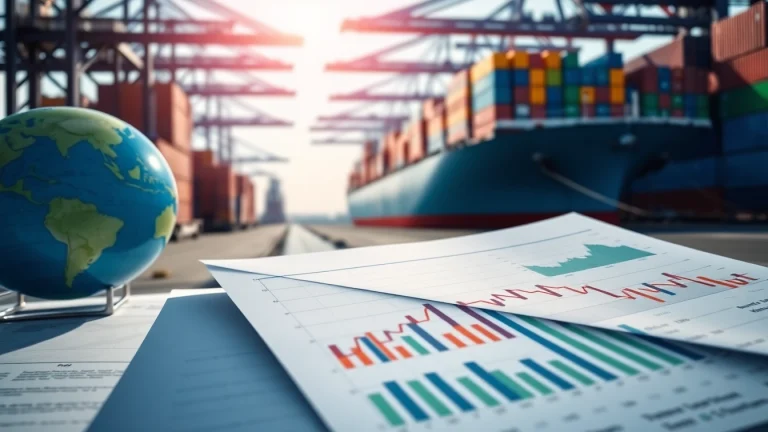
Understanding the Impact of Import Tariffs on Trade with China
Introduction to Import Tariffs and China
Defining Import Tariffs
Import tariffs are taxes imposed by governments on goods purchased from overseas suppliers. They serve several purposes, from generating revenue for the government to protecting domestic industries from foreign competition. When a country imposes a tariff, it raises the cost of imported goods, potentially encouraging consumers to opt for domestically produced items instead. This can lead to increased prices for consumers and disrupt global supply chains, but tariffs can also protect jobs and industries within a nation. To understand the complexities of tariffs, especially those involving China, it’s essential to consider their implications and broader context in global trade.
The Role of China in Global Trade
China is a key player in global trade, often referred to as the “world’s factory” due to its massive manufacturing capabilities. As one of the largest exporters globally, China has a significant influence not just on the international marketplace but also on trade policies adopted by other nations. The country supplies a vast array of products, from electronics to textiles, contributing to a large percentage of global imports. As trade dynamics evolve, understanding China’s role in this extensive network is critical for businesses and policymakers alike. For insights into various aspects of trade, including import tariffs china, continual study of its policies and market behavior is crucial.
Historical Context of Import Tariffs with China
The historical context of import tariffs concerning China begins decades ago, notably post-World War II. Throughout the late 20th century, China’s economic policies and trade relations shifted dramatically, particularly after joining the World Trade Organization (WTO) in 2001. Initially, many countries engaged in free trade agreements with China, benefiting from lower prices and increased product availability. However, as China’s economy grew, so did concerns regarding intellectual property theft, labor practices, and trade imbalances, leading to a rise in protective tariffs. The recent trade wars and political tensions have further complicated these relationships, altering tariff structures and their associated implications all over again.
Current Tariff Rates and Trade Policies
Overview of Import Tariffs China Imposes
As of 2023, China applies a variety of import tariffs on goods entering the country. These tariffs vary significantly based on the product category and the country of origin. For example, cosmetic imports may face lower tariffs compared to heavy machinery. On average, specific duties can range from 0% to over 50%, making it crucial for businesses to be well-informed about rates applicable to their products. Understanding the nuances of these tariffs can aid companies in better strategizing their supply chains and pricing models. It is essential to account for these taxes when calculating total landed costs of goods imported from China.
Changes in Trade Policies Over Recent Years
The trade landscape has witnessed substantial changes over the past few years, primarily influenced by geopolitical factors, such as trade wars and negotiations. The U.S.-China trade war resulted in increased tariffs on various goods, impacting thousands of products and altering trade patterns. Recently, some tariffs have been reduced in specific negotiated sectors, while others remain or have been increased. Additionally, China’s push toward “self-sufficiency” has shifted its focus toward domestic innovation and sustainability, further influencing its tariff policy direction.
Impact of Tariff Changes on Import Costs
The adjustments in tariffs dramatically affect import costs for goods coming from China, which directly influences the pricing strategies of businesses. Higher tariffs lead to increased costs that can be passed down to consumers, resulting in higher prices for everyday goods. Conversely, reductions can have a stimulating effect, making certain products more affordable for consumers. Analyzing these fluctuations is crucial for companies aiming to remain competitive in an evolving market. Businesses must be prepared to adapt their operational strategies in response to these tariff changes to maintain profitability.
Effects of Import Tariffs on Different Sectors
Manufacturing Sector Analysis
The manufacturing sector is significantly impacted by import tariffs. Industries that rely heavily on imported raw materials from China face higher costs, affecting production budgets and profit margins. For example, sectors like automotive manufacturing can see price increases in critical components, potentially raising final product costs for consumers. Manufacturers may need to reevaluate their supply chain sources, negotiate better terms with suppliers, and, in some cases, localize manufacturing to mitigate the effects of tariffs. The ongoing adjustments allow for adaptations tailored to shifting economic conditions, benefiting long-term sustainability.
Consumer Goods: Challenges and Opportunities
Import tariffs on consumer goods pose both challenges and opportunities. For retailers, escalating prices due to higher tariffs can mean reduced demand, as consumers may shift their purchasing behavior toward cheaper alternatives or domestically produced items. However, along with challenges come opportunities for innovation and strategic positioning. Brands can capitalize on niche markets or create unique product offerings that emphasize quality and sustainability. Awareness of tariff implications enables businesses to respond proactively and find a competitive edge in the marketplace.
Agricultural Imports and Tariff Implications
Agriculture is another sector affected by import tariffs, particularly between the United States and China. Tariffs on agricultural goods can significantly alter trade flows, impacting farmers and consumers alike. For instance, higher tariffs on soybeans have led to decreased exports from the U.S. to China, prompting farmers to seek alternative markets. The agricultural supply chains are intricately linked to tariff policies, making proper forecasting and market adjustments essential for sustaining the industry. Understanding these implications can help stakeholders in agriculture devise better strategies and engage in successful negotiations.
Navigating Market Strategies Amid Tariffs
Best Practices for Importing from China
Importing goods from China amid fluctuating tariffs requires a strategic approach. Businesses should stay updated on tariff rates and potential changes. Best practices include thorough research on tariff classifications, building strong relationships with suppliers, and negotiating favorable payment terms. Companies should also consider diversifying their supplier base to reduce dependency on single sources. This helps mitigate risk and allows flexibility in sourcing. Evaluating additional costs like freight, customs duties, and handling fees will ensure that the total cost structure is clear, facilitating informed decision-making.
Adapting to Changing Tariffs: Case Studies
Several companies have effectively adapted to changing tariffs through innovative strategies. For instance, a large electronics manufacturer shifted parts production closer to its main market in response to tariff increases. Instead of relying solely on Chinese imports, the company diversified its supply chain by sourcing components from countries with lower tariffs and better trade agreements. Case studies reveal that agility in operations and willingness to pivot can provide substantial advantages in a tariff-impacted environment. Ensuring flexibility to adapt and reassess strategies in real-time is vital for sustained success.
Utilizing Tariff Exemptions and Trade Agreements
Many countries offer tariff exemptions or trade agreements that can be beneficial for businesses importing from China. Understanding these exemptions is crucial for minimizing costs. For example, some goods may qualify for lower tariff rates under a Free Trade Agreement (FTA), or specific exemptions may apply for goods produced in designated economic zones. Businesses should work closely with trade advisors to identify applicable agreements that can lead to significant savings. Implementing these strategies can provide a competitive edge, reducing overheads and maximizing profitability in a challenging trade environment.
Future Outlook on Import Tariffs and Trade with China
Potential Changes in Policies: What to Expect
The future of import tariffs and policies pertaining to China remains uncertain, shaped by geopolitical dynamics and domestic priorities within nations. Potential policy changes may arise from recovery efforts from the pandemic and ongoing conflicts between countries. China’s push towards technological advancements and self-reliant manufacturing may shift how tariffs are applied and negotiated moving forward. Stakeholders must remain vigilant, watching for signs of new policies and adjusting strategies accordingly to remain competitive.
Impact of International Relations on Tariff Structures
International relations profoundly influence tariff structures. Trade tensions between the U.S. and China have a ripple effect on global markets, prompting businesses to assess potential geopolitical risks in their trading operations. A warming of relations might lead to tariff reductions, which could stimulate trade flows significantly. Conversely, ongoing tensions could result in increased tariffs and trade barriers. Monitoring these international relations is crucial for businesses to adapt their import strategies and minimize risks associated with uncertain market conditions.
Strategizing for Future Trade with China
As trade with China continues to evolve, it is essential for businesses to develop long-term strategies that account for possible shifts in tariffs and trade policies. Fostering strong relationships with suppliers, diversifying market access, and embracing technology for supply chain management will be essential components of this strategy. Additionally, leveraging data analytics can provide insights into market trends, leading to more informed decision-making. Businesses should proactively engage in dialogue with policy stakeholders to influence future trade frameworks and safeguard their interest.


